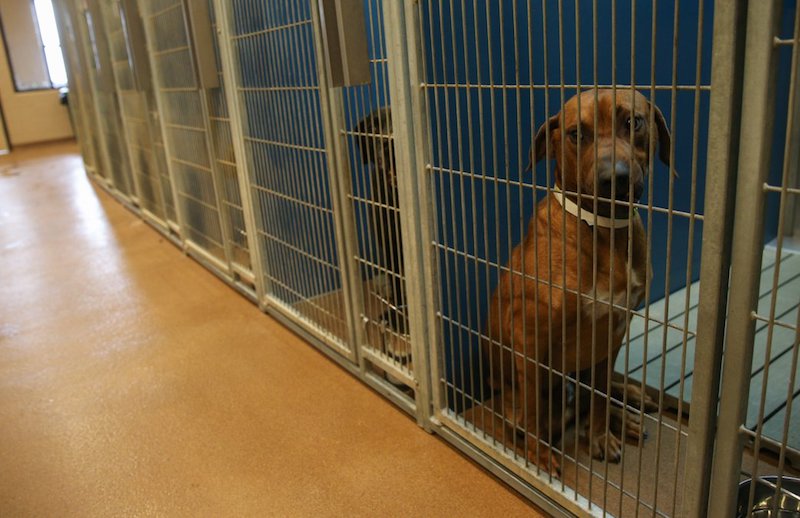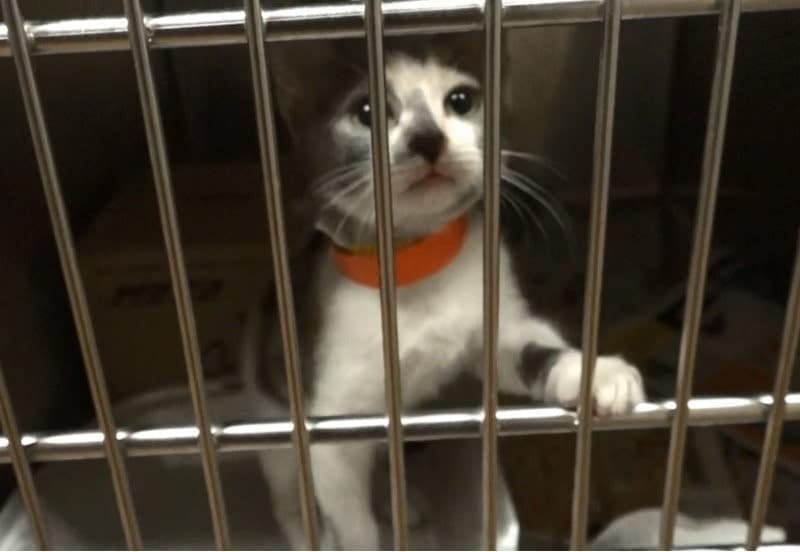
OREM ― Animal rights activists are making their voices heard in the second largest city in Utah County, hoping to get elected officials to halt the use of gas chambers to euthanize shelter animals.
“I’ve had about 40 emails, and we’ve had multiple people show up at city council in our personal appearance section … it’s been a very large outcry against what’s going on,” Orem Mayor Richard Brunst said.
The nonprofit Utah Animal Rights Coalition (UARC), which is spearheading the effort, posted on its website that as of May 2021, all Utah animal shelters had abandoned the old gas chamber method in favor of euthanization by injection (EBI) ― except for two that serve all of Utah County.
And UARC Executive Director Jeremy Beckham said that only four shelters in the nation still use gas chambers to euthanize cats and dogs.
The North Utah Valley Animal Shelter (NUVAS) in Lindon serves Orem and 10 other cities that include Alpine, American Fork, Cedar Hills, Eagle Mountain, Highland, Lehi, Lindon, Orem, Pleasant Grove, Saratoga Springs and Vineyard. At NUVAS, their gas chamber is their sole method to kill shelter animals.
The southern half of the county is served by the South Utah Valley Animal Shelter (SUVAS) in Spanish Fork, which uses both EBI and its gas chamber to put animals down. SUVAS serves Utah County’s largest city (Provo), along with Elk Ridge, Genola, Goshen, Mapleton, Salem, Santaquin, Spanish Fork, Springville and Woodland Hills.
Tug Gettling has directed NUVAS since 2005, and maintains that the gas chamber is less stressful and painful for animals than EBI. He also believes that it’s “safer and less traumatic to the staff members having to perform this unpleasant task.”
But animal advocates nationwide disagree.
“Death in a gas chamber can be painful and excruciating,” Kitty Block, president of the Humane Society of the United States, said in her February 2020 blog. “The animals are placed in the small, dark box, and they may remain conscious for several minutes, terrified and trying desperately to find a way out.”
And shelters sometimes put several animals in the chamber ― against guidelines that recommend one at a time ― which can intensify their stress and panic, Block added.
According to UARC, it can take up to 30 minutes for some animals to die in a gas chamber ― but a rare few actually survive the process.
From January through May of this year, Gettling said that NUVAS euthanized 86 animals in its gas chamber. He described it as “absolutely the hardest part of shelter work.”
By email, Gettling confirmed that NUVAS employees utilize a temperament test to determine which animals live or die.
“We absolutely utilize a behavior analysis/temperament test to determine if our animals are safe to put into the community,” Gettling said, noting the test is derived from several methods including the SAFER tool for evaluating potential rehoming of shelter dogs and cats.
But copies of some of those tests ― which UARC obtained through government records requests and posted on its website ― raise questions about their validity (https://uarc.io/north-utah-valley-animal-shelter-where-dogs-cats-suffer-before-they-die/).

One cat, recommended for euthanasia in February, failed only one of 11 portions of the test ― the “kennel approach.” In that case, the cat was rated as “too submissive.”
Paperwork for another failed cat included this note: ”Didn’t show any aggression, but was cautious and stayed in the corner of the kennel. Don’t feel comfortable passing.”
As of June 15, the NUVAS website featured 3 dogs, 5 cats and 3 rodents available for adoption.
For Orem’s Mayor Brunst, he’s heard enough to determine he’s against the use of gas chambers.
“It doesn’t sound very humane to me,” Brunst said. “Doing it by injection seems much more humane and it sounds like the majority of cities nationwide have changed.”
Both NUVAS and SUVAS are special service districts which Utah County established around 2005. So Brunst believes it will take more than just Orem to move the dial.
At this point, Brunst said he recommends that concerned residents and advocates “form a coalition with representatives from each city and then get together a proposal or resolution that each city could pass, then take to the NUVAS Special Service District.”
But Brunst didn’t rule out eventually taking that task on himself: “If that doesn’t happen, then later on I’ll get involved and lead it.”
Beckham said UARC recently gathered 66,000 signatures on a petition in just three weeks, adding that their advocacy efforts extend well beyond Orem.
“We’ve reached out to the city councils and mayors of literally every town in Utah County about this,” Beckham said. “Orem is getting a little more attention because of their outsized role at that shelter.”
For several years, various Utah legislators sponsored bills to ban the use of gas chambers to kill shelter animals. The most recent was Sen. David Hinkins’ SB237 this year, which unanimously cleared the Senate during the session’s final week, then stalled in the House where it failed to come up for a vote.
Beckham was involved in those early legislative efforts when Utah had as many as eight shelters that still used gas chambers.
“It made more sense to go for a statewide ban then. But now that we’re down to just two, I feel we can focus on local change,” Beckham said. “And being a municipal election year as well, I’m hoping some of these council and mayoral candidates may incorporate this issue into their own platforms. That might be how we see change.” U
Cathy McKitrick is a freelance journalist in northern Utah.
Subscribe to Utah Stories weekly newsletter and get our stories directly to your inbox





